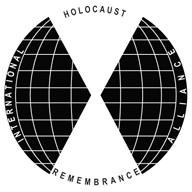“We share a commitment to throw light on the still obscured shadows of the Holocaust.”
-- Declaration of the Stockholm International Forum on the Holocaust
 INTERNATIONAL HOLOCAUST REMEMBRANCE ALLIANCE
INTERNATIONAL HOLOCAUST REMEMBRANCE ALLIANCE
“We share a commitment to throw light on the still obscured shadows of the Holocaust.”
-- Declaration of the Stockholm International Forum on the Holocaust
IHRA’s conference on “Killing Sites – Research and Remembrance” under the Multi-Year Work Plan took place in Krakow, Poland from 22-23 January 2014.
The conference, hosted by the Pedagogical University of Krakow, was attended by a variety of experts in the field. IHRA Chair Dr. Mario Silva and incoming Chair Sir Andrew Burns addressed the participants, and Advisor to the IHRA Steven Katz moderated one of the sessions. Attendees had the opportunity to attend a number of panel discussions focusing on the presentation of field work and various projects, regional perspectives and local circumstances, and databases, education, and commemoration.
The in-depth knowledge presented at the conference will serve as a basis for a report that will be prepared by the project’s Steering Committee. The report will name global and regional actors in the field, summarize past endeavors, and analyze recent approaches to provide an overview of the subject.
Read more about the killing sites conference in the New York Times.
About IHRA’s Multi-Year Work Plan Project on Killing Sites
Remembrance of the Holocaust often focuses on those who have suffered and perished in concentration camps, ghettos or on death marches. But the “killing sites,” places where mass shootings took place, are still relatively unknown. IHRA’s Multi-Year Work Plan (MYWP) project on killing sites is dedicated to the location of these sites, their commemoration, preservation, and education.
Popular and official political commemorations, as well as much scholarly research, have tended to focus on the extermination camps, the gas chambers, and the ghettos. The field of research on "killing sites," however, was neglected for a long time and is in desperate need of further attention. The victims of these mass murders were predominantly Jewish and often lived at nearby premises. Communities that existed and thrived for centuries perished in a few hours, hastily buried in unmarked graves and pits. Mass shootings were a distinctive feature of the genocidal and occupation policies of the Nazis in the eastern parts of Europe, but they were not restricted to Eastern European soil, although the majority of large-scale “killing sites” were set up there.
The victims were killed by a variety of mobile and stationary killing units. It is estimated that 25 to 30 percent of the victims of the Holocaust were murdered by mass shooting. The vast majority of these “killing sites” were deliberately left unmarked by the perpetrators and many have yet to be located. Various institutions and initiatives have begun in recent years to research and mark the sites. Due to the often tremendous dimensions of mass graves and huge numbers of “killing sites” that are still undiscovered or no longer locatable, these attempts can only form the basis for current and future activities. They emphasize the need for further research and reveal the present lack of scholarly work combined with transnational approaches which should be stimulated. Yet international cooperation and networking on a broader scale is virtually non-existent.
IHRA’s MYWP project on killing sites aims to offer insight on different approaches to explore, study and preserve the killing sites. It will raise public awareness, serve as a neutral platform for networking, offer support and expertise to local initiatives, and encourage further research.